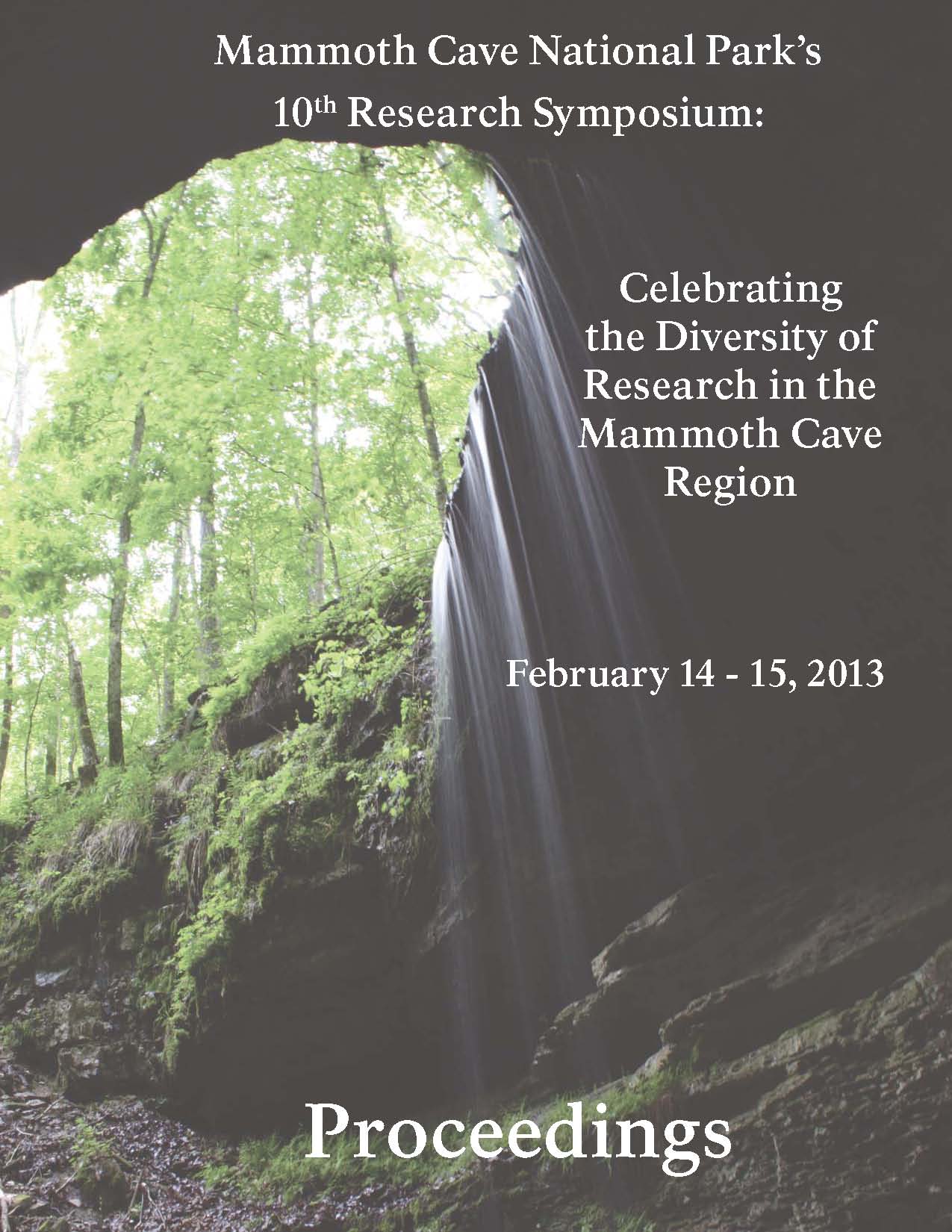Start Date
15-2-2013 2:50 PM
Description
The karst landscape at Mammoth Cave National Park, Kentucky, was formed by water through the dissolution of soluble rocks forming sinkholes, disappearing streams, emerging springs, closed depressions, and a combination of wet and dry caves. The Park’s cave streams and pools provide a home to unique organisms. Surface waters in the Park tend to rapidly drain into subsurface geologic features and caves. This rapid infiltration makes the subsurface vulnerable to contamination. The objective of this investigation was to characterize chemical transport from the surface into the cave. The preliminary results were achieved by tracer studies and monitoring water chemistry along known flowpaths. The results presented in this paper are the outcome of several studies occurring between 2009-2012 in a partnership between Mammoth Cave National Park, Tennessee State University, Mammoth Cave International Center for Science and Learning, and U.S. Geological Survey. Processes that influenced chemical transport included storm intensity, time between storms, epikarst saturation, dispersion, dilution, and complex fl ow paths in the geology.
Recommended Citation
West, Ashley; Solomon, David; Ho, Hung-Wai; Roland, Victor; Embry, Irucka; Toomey, Rick; Painter, Roger; Sharpe, Lonnie; and Hui, Dafeng, "Three Examples of Chemical Transport in Storm Runoff at Mammoth Cave National Park, Kentucky" (2013). Mammoth Cave Research Symposia. 25.
https://digitalcommons.wku.edu/mc_reserch_symp/10th_Research_Symposium_2013/Research_Posters/25
Included in
Animal Sciences Commons, Forest Sciences Commons, Geology Commons, Hydrology Commons, Other Earth Sciences Commons, Plant Sciences Commons
Three Examples of Chemical Transport in Storm Runoff at Mammoth Cave National Park, Kentucky
The karst landscape at Mammoth Cave National Park, Kentucky, was formed by water through the dissolution of soluble rocks forming sinkholes, disappearing streams, emerging springs, closed depressions, and a combination of wet and dry caves. The Park’s cave streams and pools provide a home to unique organisms. Surface waters in the Park tend to rapidly drain into subsurface geologic features and caves. This rapid infiltration makes the subsurface vulnerable to contamination. The objective of this investigation was to characterize chemical transport from the surface into the cave. The preliminary results were achieved by tracer studies and monitoring water chemistry along known flowpaths. The results presented in this paper are the outcome of several studies occurring between 2009-2012 in a partnership between Mammoth Cave National Park, Tennessee State University, Mammoth Cave International Center for Science and Learning, and U.S. Geological Survey. Processes that influenced chemical transport included storm intensity, time between storms, epikarst saturation, dispersion, dilution, and complex fl ow paths in the geology.

